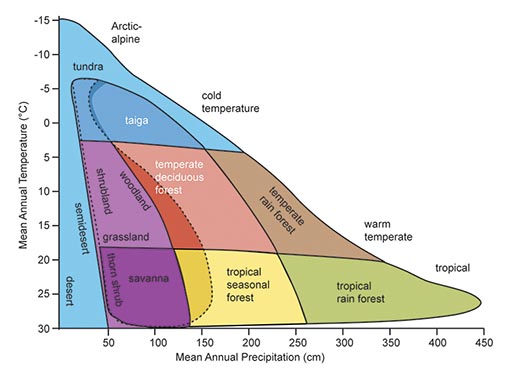5.1 Climate
Climate is a critical environmental factor that often dominantly determines biodiversity patterns. It does this mainly through its variability in time and space, acting as a limit for the survival and success of different species. Climatic variation is often fuelled by differences in latitude (at the global scale) or availability of water or solar radiation (at local and regional levels). A prominent global example of climate’s role is the various types of biomes in the world.These are a direct reflection of temperature and availability of water, which ultimately determine the local flora and fauna (see Figure 14).

Activity 7 Biome characteristics
Examine Figure 14, in which different biomes are shown, depending on the prevalent temperature and precipitation. Then complete the following table.
| Biome | Temperature | Precipitation | Expected biodiversity |
|---|---|---|---|
| tropical rainforest | hot | ||
| cold | medium wet | low | |
| very cold | very dry | very low | |
| temperate deciduous forest | medium |
Answer
Here is the completed table, bearing in mind that the answers for some biomes could vary.
| Biome | Temperature | Precipitation | Expected biodiversity |
|---|---|---|---|
| tropical rainforest | hot | very wet | high |
| taiga | cold | medium wet | low |
| tundra | very cold | very dry | very low |
| temperate deciduous forest | medium | medium wet | medium |
